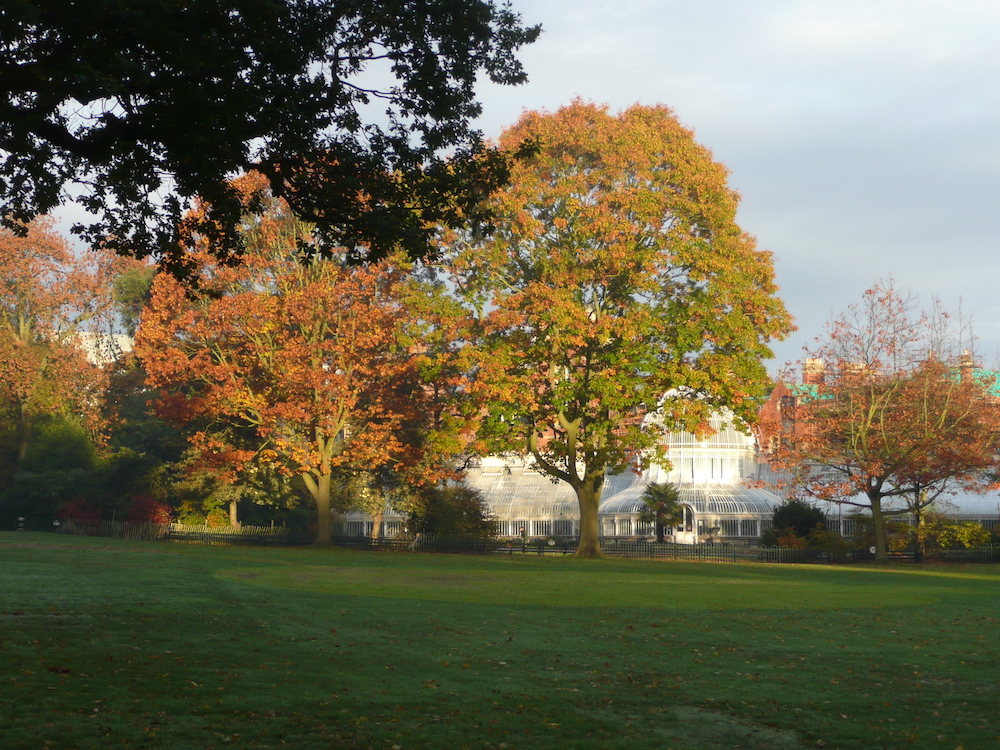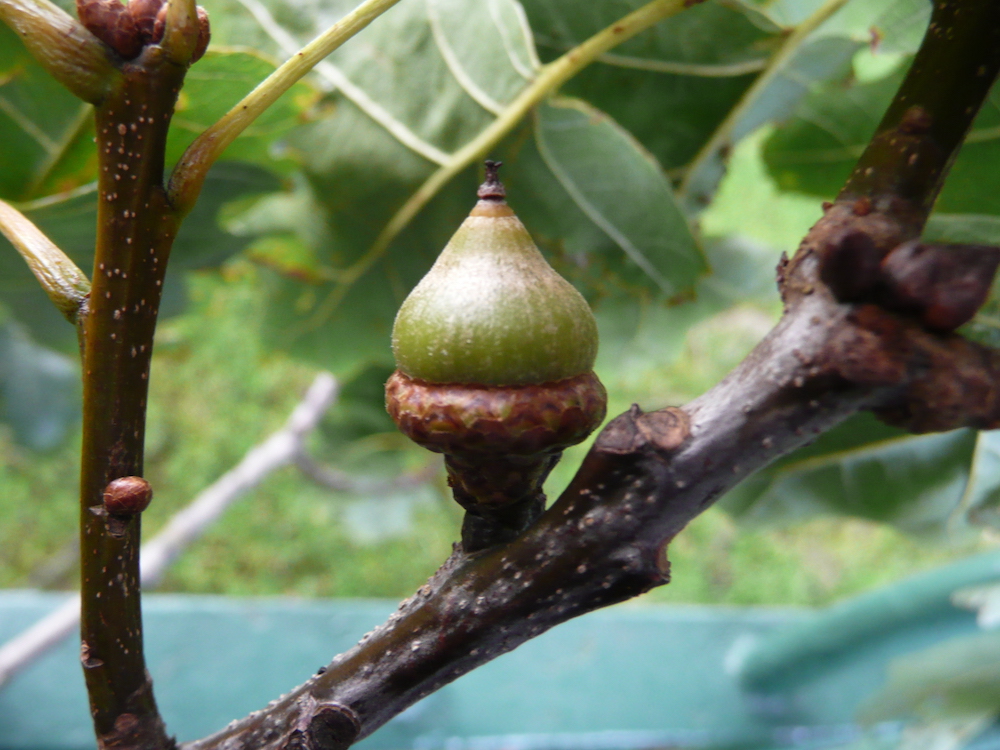Quercus rubra L.
Red oak
The tree tag number relates to the black tree-maintenance tags, usually fixed on the trunk, 2 to 3m above ground level.
The red oak (Quercus rubra) is one of the most important native timber trees of the Eastern United States. It occupies the same ecological position and the same cultural significance in its area as do our native oaks (Quercus robur and Quercus petraea) in the UK. It was an important timber tree to the early settlers and is still valued for house building and furniture.
The leaves of red oak have lobes that taper to a fine point or hair giving them a more spiky look compared to the leaves of English oak (see below). The acorns are more or less egg-shaped. The red oak will make a substantial forest tree and in spite of its fine autumn colour is not suitable for a small garden. It has shown good pollution tolerance and is used as a city tree in the USA. The golden red oak is a variant with distinctive yellow leaves in spring – there is an example in Belfast Botanic Gardens that can be seen at the extreme right of the two photos below.





Photos taken in Belfast Botanic Gardens in 2009. Copyright: Friends of Belfast Botanic Gardens.
